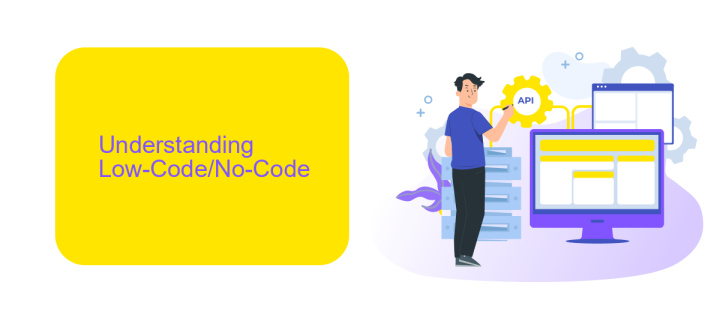Low-Code No-Code Applications
Low-Code No-Code (LCNC) applications are revolutionizing the way businesses approach software development. By enabling users to create applications with minimal coding knowledge, these platforms democratize technology, making it accessible to a broader audience. This article explores the growing popularity, key benefits, and potential challenges of LCNC applications, shedding light on how they are transforming industries across the globe.
Introduction
Low-Code and No-Code applications are revolutionizing the way businesses approach software development. These platforms empower individuals with little to no programming experience to create robust applications, reducing dependency on traditional developers. This democratization of software development is driving innovation and efficiency across various industries.
- Accelerated development timelines
- Cost-effective solutions
- Enhanced collaboration between IT and business units
- Greater flexibility and scalability
One of the key advantages of Low-Code and No-Code platforms is their ability to integrate seamlessly with existing systems. Tools like ApiX-Drive facilitate these integrations by enabling users to connect various applications and automate workflows without any coding. This not only streamlines operations but also allows businesses to adapt quickly to changing market demands. As a result, organizations can focus more on strategic initiatives rather than getting bogged down by technical complexities.
Understanding Low-Code/No-Code

Low-code and no-code platforms are revolutionary tools that enable users to create applications with minimal or no coding experience. These platforms provide visual interfaces, pre-built templates, and drag-and-drop functionalities, making it easier for non-developers to build and deploy applications quickly. They are designed to bridge the gap between business needs and IT capabilities, allowing organizations to innovate faster and reduce development costs.
One of the key advantages of low-code/no-code platforms is their ability to integrate with various services and systems seamlessly. For instance, ApiX-Drive is a powerful tool that facilitates the integration of different applications and services without any coding. It allows users to automate workflows and data transfers between multiple platforms, enhancing productivity and efficiency. By leveraging such integration tools, businesses can ensure that their low-code/no-code applications work harmoniously with existing systems, providing a comprehensive and streamlined solution.
Benefits and Use Cases

Low-Code No-Code applications offer significant advantages for businesses and developers alike. One of the primary benefits is the accelerated development process, enabling faster time-to-market for applications. These platforms also reduce the need for extensive coding knowledge, making application development accessible to a broader range of users, including those with limited technical skills.
- Rapid Prototyping: Quickly create and test application prototypes without extensive coding.
- Cost Efficiency: Reduce development costs by minimizing the need for specialized developers.
- Enhanced Collaboration: Facilitate better teamwork between IT and business units.
- Easy Integration: Utilize tools like ApiX-Drive to seamlessly integrate various applications and services.
- Scalability: Easily scale applications to meet growing business demands.
These benefits make Low-Code No-Code platforms ideal for a variety of use cases, such as automating business processes, developing customer-facing applications, and creating internal tools. For instance, ApiX-Drive can be used to streamline integrations between different software, enhancing overall productivity and efficiency. By leveraging these platforms, businesses can innovate faster and stay competitive in a rapidly evolving market.
Challenges and Limitations

Despite the growing popularity of Low-Code and No-Code applications, they come with their own set of challenges and limitations. One of the primary concerns is the lack of customization options. While these platforms offer a wide array of templates and pre-built components, they often fall short when it comes to meeting highly specific business requirements.
Another significant issue is scalability. Low-Code and No-Code solutions are typically designed for small to medium-sized projects. As the project grows, these platforms may struggle to handle increased complexity and larger data volumes, leading to potential performance bottlenecks.
- Limited customization options
- Scalability issues
- Vendor lock-in
- Security concerns
Integration with existing systems can also pose a challenge. While services like ApiX-Drive can help facilitate integrations, not all platforms offer seamless compatibility. Additionally, there are concerns around vendor lock-in and security vulnerabilities, which can make organizations hesitant to fully commit to Low-Code or No-Code solutions.


Future of Low-Code/No-Code
The future of Low-Code/No-Code applications is incredibly promising, as these platforms continue to evolve and empower a broader range of users to create sophisticated software solutions without extensive coding knowledge. As businesses strive for agility and innovation, the demand for rapid application development is surging. Low-Code/No-Code platforms are stepping up to meet this demand by offering intuitive interfaces, pre-built templates, and drag-and-drop functionalities that simplify the development process. This democratization of software creation is not only accelerating digital transformation but also enabling non-technical users to contribute to IT projects, thereby fostering a more collaborative environment.
Moreover, the integration capabilities of Low-Code/No-Code platforms are becoming increasingly robust, allowing seamless connectivity with various third-party services and APIs. Tools like ApiX-Drive are at the forefront of this trend, providing users with the ability to effortlessly set up integrations between different applications. This enhances the functionality and interoperability of Low-Code/No-Code solutions, making them even more versatile and powerful. As these platforms continue to advance, we can expect to see even greater adoption across industries, driving innovation and efficiency in unprecedented ways.
FAQ
What are Low-Code and No-Code platforms?
What are the benefits of using Low-Code and No-Code platforms?
Can Low-Code and No-Code platforms be used for complex applications?
How secure are applications built with Low-Code and No-Code platforms?
How can I integrate my Low-Code or No-Code application with other software?
Time is the most valuable resource in today's business realities. By eliminating the routine from work processes, you will get more opportunities to implement the most daring plans and ideas. Choose – you can continue to waste time, money and nerves on inefficient solutions, or you can use ApiX-Drive, automating work processes and achieving results with minimal investment of money, effort and human resources.

